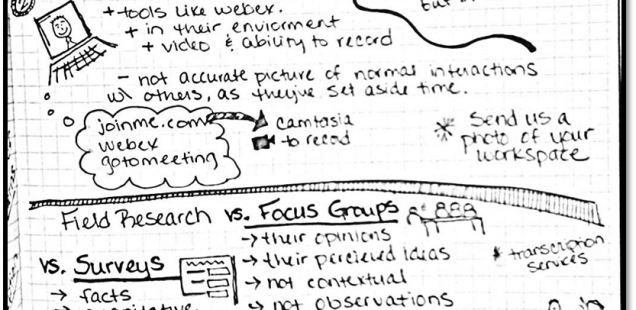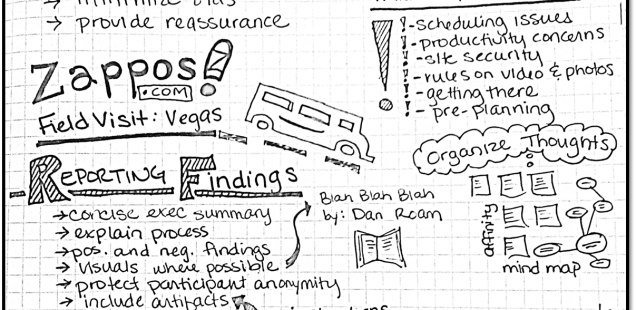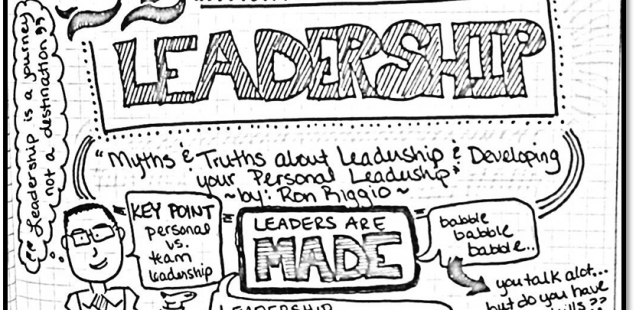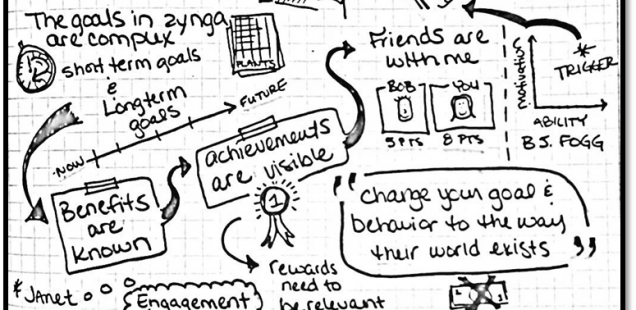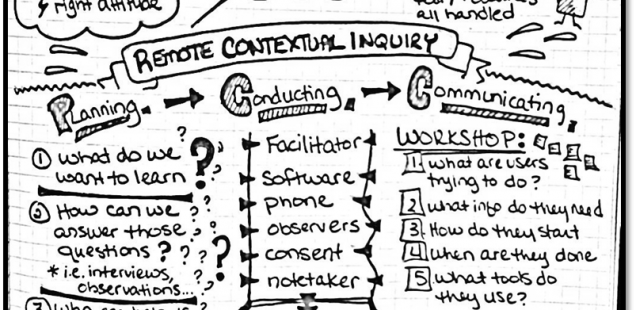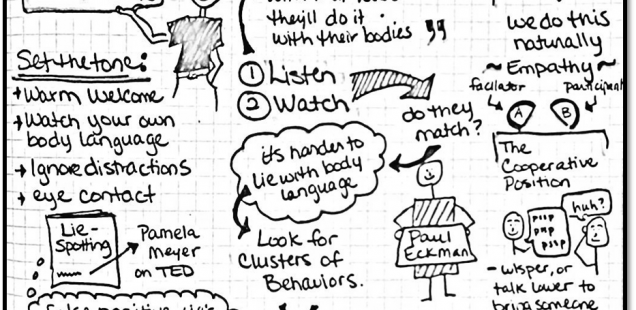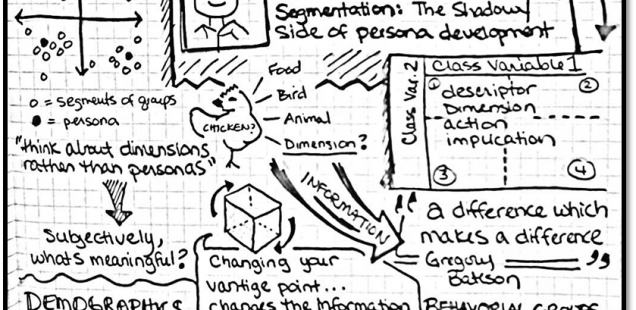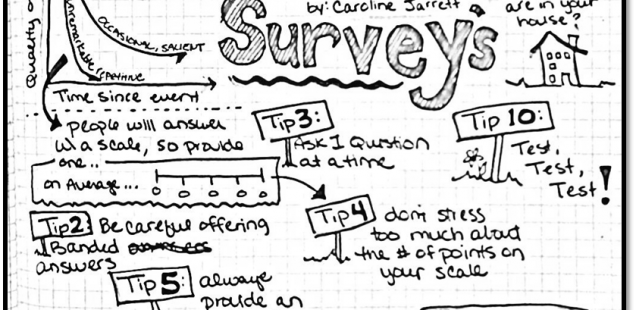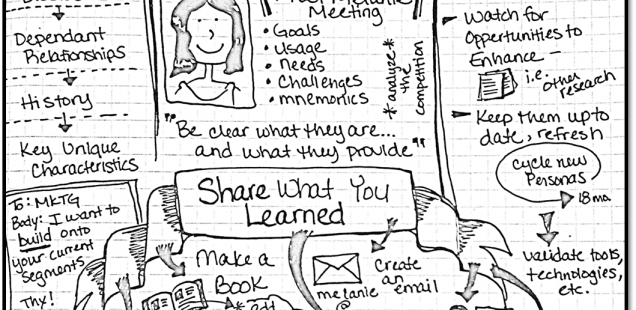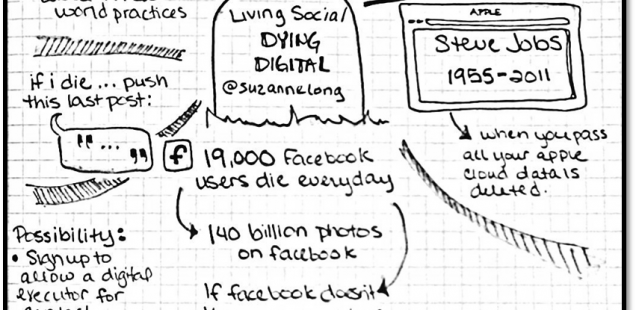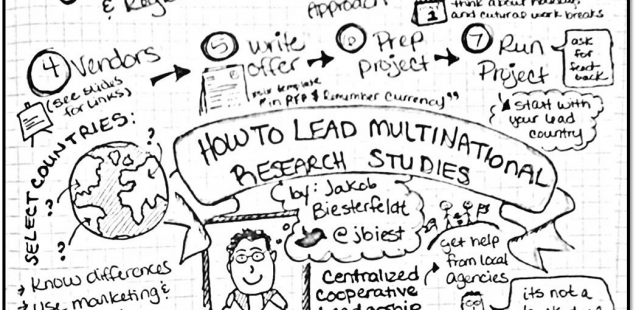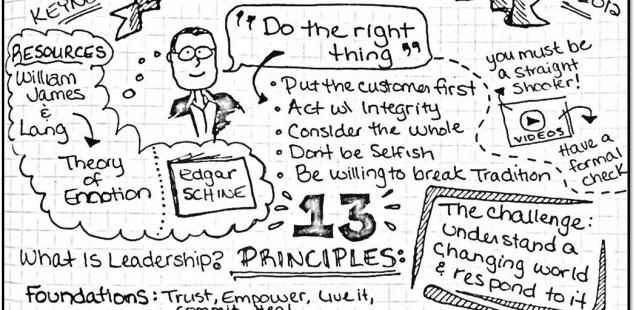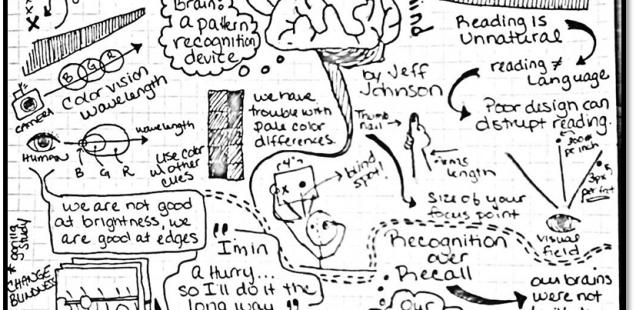UPA 2012 Session Sketchnotes
I did back to back conferences this month, attending the UPA the day after flying out of Ohio from Midwest UX. Still excited about the sketchnoting workshop I had attended there I decided to see if I could keep it going throughout the UPA conference as well. Therefore instead of my normal single post presentation reviews, this post will encompass sketchnotes from all the sessions I enjoyed at the conference this year.
Field Research for User Experience
The first thing I did at UPA this year was a fantastic workshop by Danielle Cooley. I don’t think it could have gotten much better. Of course I can’t complain after getting a limo ride to Zappos headquarters to do some onsite contextual inquiry work… did I mention we got free lunch too!
Danielle had lots of great tips about conducting successful research as well as nice comparisons between field research and other research methods.
Keynote: Myths and Truths About Leadership and Developing Your Personal Leadership
The keynote was done by Ronald E. Riggio and focused on the key point that good leaders are made. He noted two types of leadership, personal and team leadership. To be a good leader communication skills and ethics are paramount. You must be motivated, have a model to guide you and be able to do a clear self-analysis. Riggio proposed a four stage model that starts with the ability to inspire, this is followed by being a positive role model and being able to connect and communicate. Finally you must be able to challenge people in a positive way. I especially enjoyed his comment that leaders must also be good followers.
Why games like Farmville grab attention, shape interactions and drive sustained behavior.
Being a bit of a psych junkie I particularly enjoyed this talk by Kath Straub. She talked about engagement and persuasion in popular facebook games. There are three main principles she noted, first the ability to beg for stuff, second the ability to brag, and finally recognition of tiny victories. Although she specifically called out those principles the presentation was filled with many more valuable nuggets from short and long term goals to engagement and rewards. A good takeaway she gave at the end was that just because gaming principles are found in popular games doesn’t mean that they have to be made into a game to be successfully applied in business.
Remote Fieldwork at AutoTrader.com
This was a insightful case study of how AutoTrader.com does remote research by Emily Schroeder. She made some excellent points about how to carry out remote contextual inquiry. Her general outline for the session is a remote screen connection that can be recorded, an intro, an interview, then open observation led with a prompt like “show me what you did to…”, this is followed by closing thanks. Its an easy, convenient, and cheap way to get open-ended observations from anyone on an interface.
Reading Body Language during User Testing
Brooke Baldwin gave this presentation which focused on gestures, movements and mannerisms. Reading body language is really just about listening and watching the things that we naturally do, its just a matter of spotting the clusters of behaviors. Baldwin gave a couple good tips for facilitators, such as chair position, and watching your own body language. She noted the popular TV show Lie to Me which successfully demonstrated many principles of reading body language and recommended the TED talk How to Spot a Liar by Pamela Meyer.
Segmentation: The Shadowy Side of Persona Development
This was a interesting presentation by David Siegel about the data we use to create personas. He showed some very interesting examples about the ways we interpret data based on the dimensions in which we are viewing it. For example a picture of a chicken on screen is a chicken, but add it with other animals and it become a bird, put it on a plate and it’s dinner. “Changing the vantage point changes the information.” He recommends thinking about the dimensions in which the data is valuable more than thinking about how the data creates a persona.
10 Tips for Better Surveys
This was a nice recap of the basics for good survey design by Caroline Jarrett. I think the sketchnotes wrap it up pretty well. I’m looking forward to her book on surveys that will be coming out soon: Surveys that Work.
Putting Personas to Work
While this was a intro level talk by Carol Smith it was a great review of things to remember when creating and advocating for personas. She started by reviewing some of the things that should be included in personas, and tips for managing them after the fact. The meat of the talk was in techniques for adoption within the company through multiple sharing channels such as a persona character book and email addresses for the persona.
Living Social Dying Digital
I really enjoyed this presentation by Suzanne Long, partly for its uniqueness, and partly because it really is very relevant and often overlooked. It was in interesting inspection of the way that different social media sites handle accounts if a user passes away. She also discussed some of the issues. For example if you have a friend that passes and their Facebook page isn’t memorialized, you may still see suggestions to play games like Words with Friends with them. This is a very real issue with roughly 19k Facebook users passing everyday. Long finished the talk with some examples of ideas people are talking about for dealing with this type of thing in the future, such as Social Account Executors.
How to Lead Multinational Research Studies
This was an insightful talk by Jakob Biesterfeldt. He had some good tips such as starting international research with your lead county instead of trying to tackle multiple countries at once, more countries = more money. He also suggested using consultancies in your target country as they will be familiar with the cultural nuances required to adequately carry out the research. Other useful reminders included being mindful of currency conversions, going there yourself, and keeping track of local holidays and cultural work breaks.
Closing Keynote: Leadership in Practice
The closing keynote by Dennis Wixon was a nice presentation about 13 principles that provide a foundation for good leadership. The principles can be grouped into three categories: foundations, techniques, and adaptations.
Designing with the Mind in Mind
Friday I attended one final workshop by Jeff Johnson, the author of a book with the same name. I very much enjoyed this talk as it got into some of the human factors principles that provide the foundations for the design principles we use in our work. While I had familiarity with some of it, there was a lot of new information and it was all presented with fascinating examples. He started with perception and then moved into vision. He talked briefly about memory and focus before ending with some interesting numbers on our “brain clock rates”.
